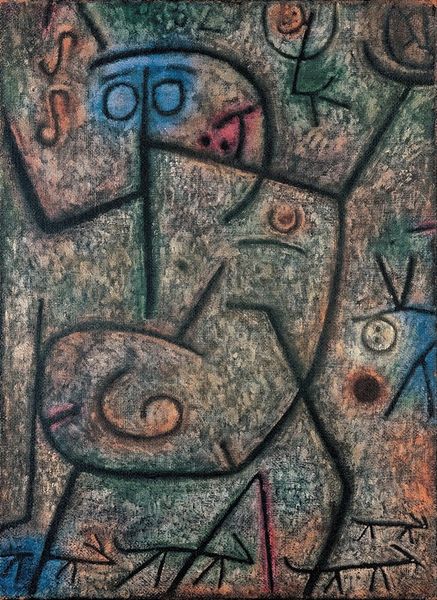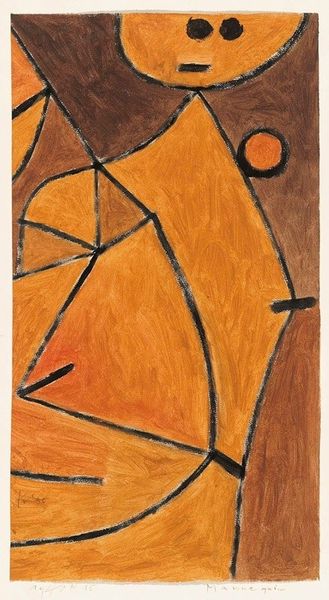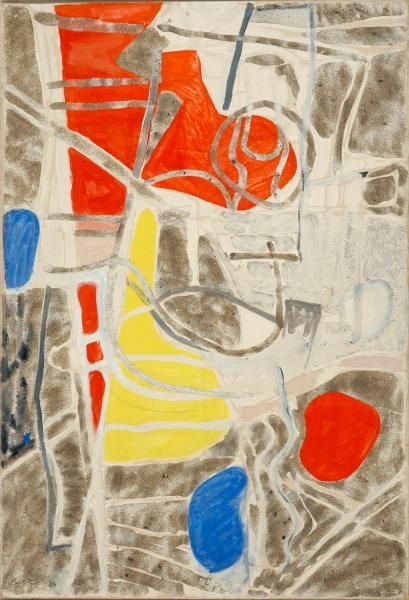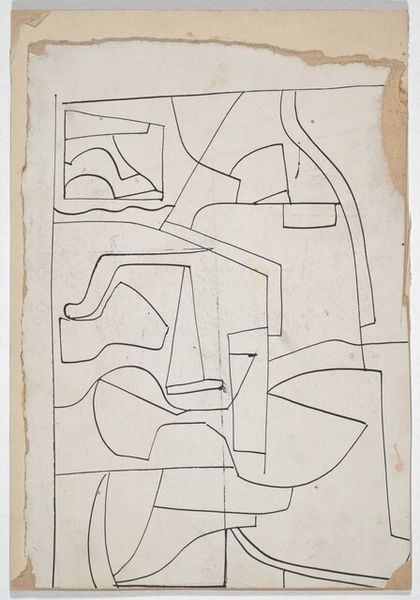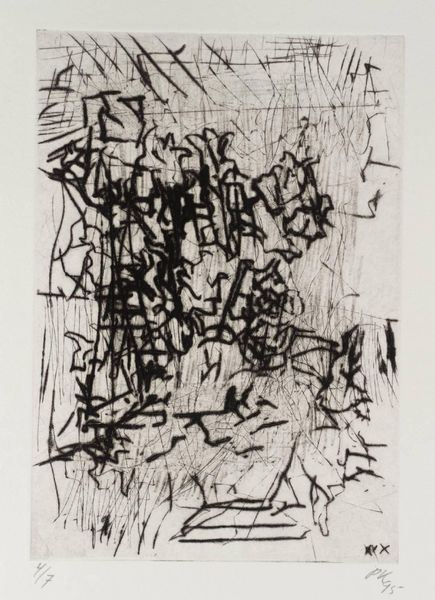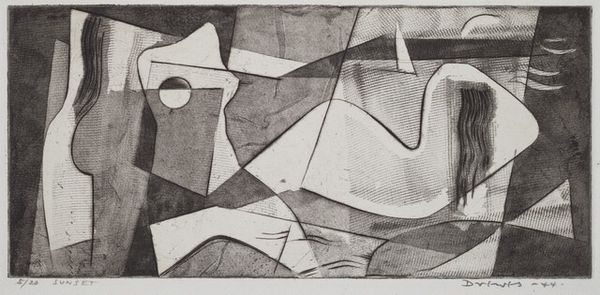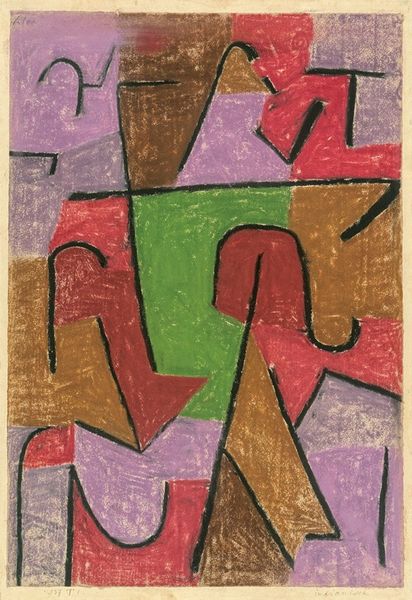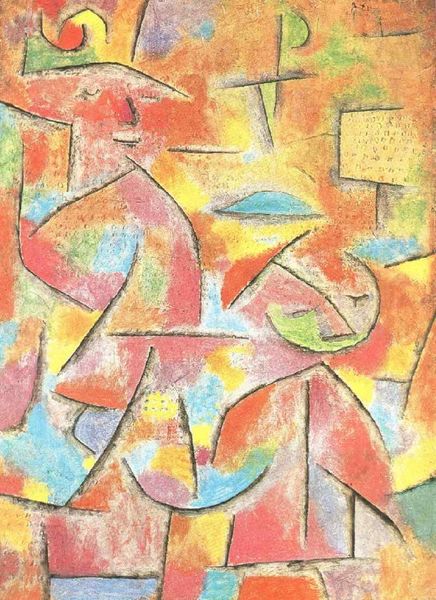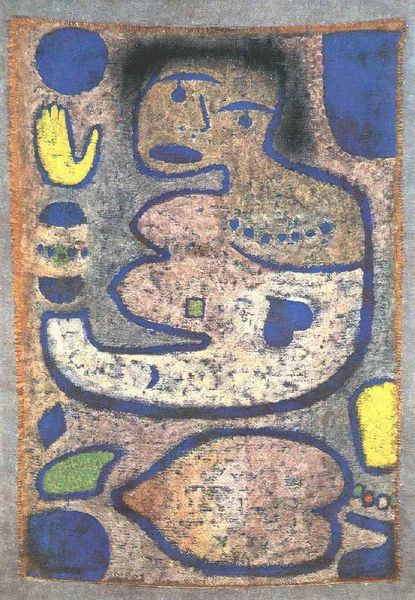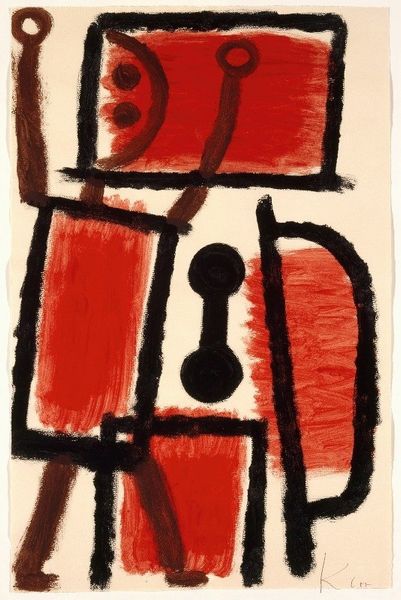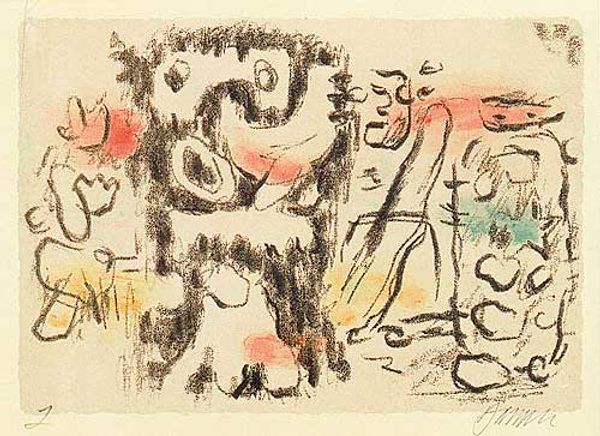
Dimensions: 22 x 26.5 cm
Copyright: Public domain
Paul Klee made this painting, *Historic Ground,* using oil transfer and watercolor. The linear forms might be read as pictographs, figures, or architectural features from some ancient settlement. Klee's interest in the art of children and the insane encouraged a more primitive style. Like other modern artists, he was interested in the question of what art is and who is qualified to make it. This image was created in 1929, between the two World Wars, and at a time when Europe was reckoning with the rise of nationalism. Klee himself was teaching at the Bauhaus, an institution that sought to break down barriers between artistic disciplines. By 1933, the Bauhaus would be pressured to close by the Nazi party, who felt its output was degenerate. Like much of Klee's work, *Historic Ground* might be seen as a playful questioning of established orders, and their notions of culture. To better understand Klee's artistic and political influences, consider looking at exhibition catalogues and his own published writings. These resources can help us think about the social conditions in which art is made, and the politics of imagery.
Comments
No comments
Be the first to comment and join the conversation on the ultimate creative platform.
